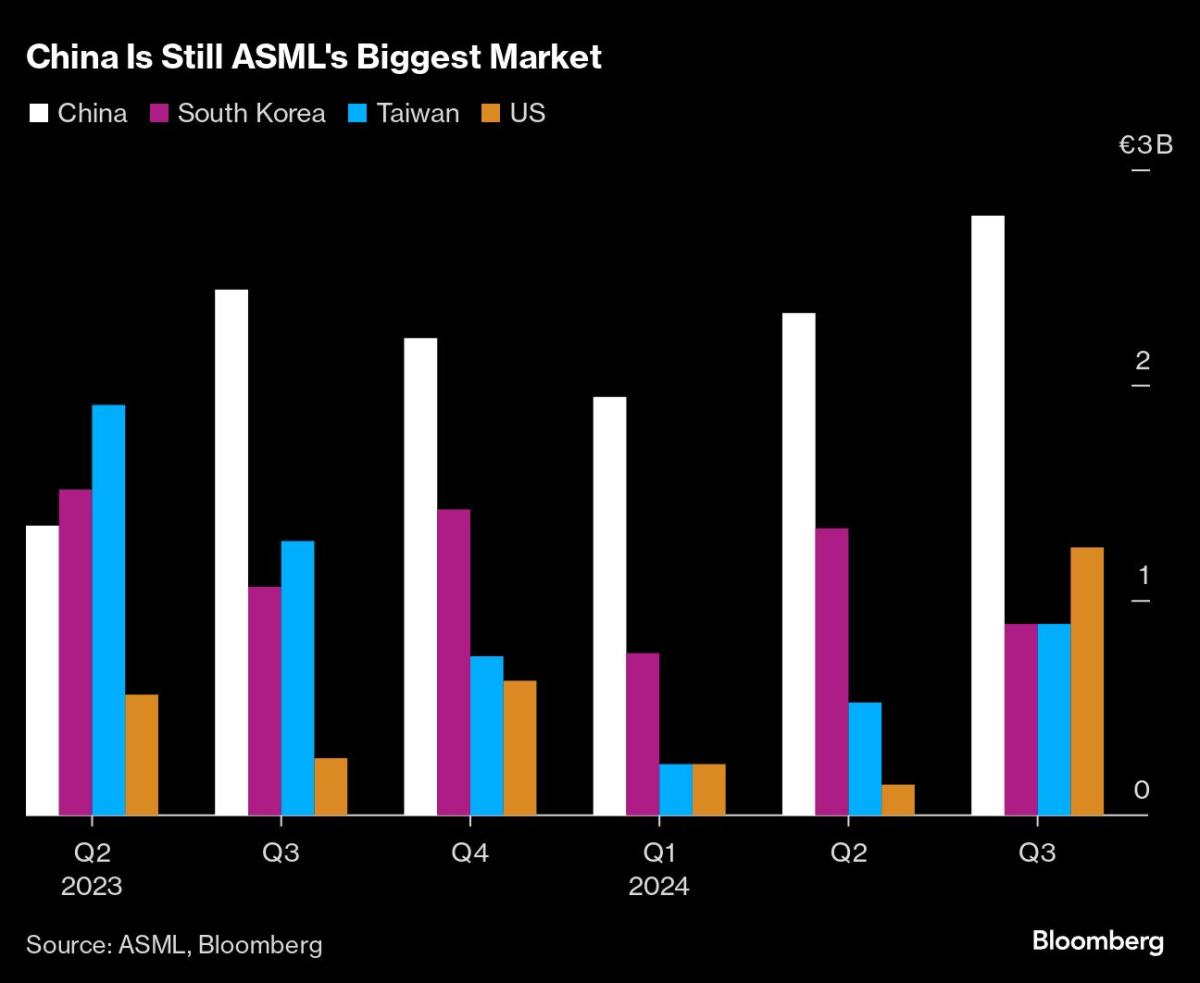Money
John Lewis Christmas advert 2024 – tearjerker ad with iconic 90s song as sister tries to find perfect gift

JOHN Lewis has gone back to basics with its Christmas advert this year with a magical tale about finding the perfect gift for a loved one.
The two minute ad is called The Gifting Hour and follows a woman’s last-minute dash to find a gift for her sister.
After 17 years, it’s the first time that one of John Lewis’ 34 shops has featured in the advert.
The mini-film was shot in John Lewis’ flagship store on Oxford Street during an overnight shoot back in October.
The department store had a multi-million pound makeover earlier this year after the retailer invested £6.5million.
The advert, created by Saatchi & Saatchi, follows the woman, Sally, rushing into a John Lewis store looking for a last minute gift.
The beginning is reminiscent of a Christmas film but Sally quickly enters a fantastical world, where she journeys through childhood memories looking for clues to help her pick the best present.
She sees her sister as a child at Christmas, fighting with her as a teenager and as a pregnant mum-to-be.
The scenes represent the thought process that goes through your head when you’re thinking about buying a gift at Christmas.
She returns back to reality once she has found the gift, which is ready and wrapped.
Then, she heads outside and has a special moment with her sister.
It ends with the strapline: “The secret to finding the perfect gift? Knowing where to look”.
John Lewis intentionally does not reveal what the gift is, as it wanted to make the advert about the sentiment of giving.
The soundtrack is also a little different this year.
John Lewis is famous for using covers of popular songs for its advert – but this year it’s Sonnet by The Verve.
It’s one of the nods to the 90s, which is a major theme this year.
The retailer is also launching a search for a coverstar on TikTok, and legendary lead singer of the band Richard Ashcroft will help pick the new star.
The winner will record and release their own track with BMG and a version of the advert with their rendition will be played on TV on Christmas Day.
SUN’S VERDICT
THE SUN’S Head of Consumer, Tara Evans, gives her verdict on the advert:
I think this advert might be a grower for many people because it really didn’t grab me after the first viewing.
I was one of the first journalists to watch it earlier this week and at first I wasn’t blown away immediately.
I found the way it jumped through different Christmas memories a little hard to follow.
But I do love the message it is trying to convey.
I love thinking of personal and meaningful gifts for my loved-ones.
For me, the best present doesn’t have to cost an arm and a leg.
I love seeing the face of a loved one when they open up a present.
It’s a little, magical way to show that you really care for someone by thinking of a gift that will make them feel appreciated, loved and listened to.
That doesn’t mean spending loads.
In fact, it could cost next to nothing but just a little reminder of an inside joke or a sign of a shared memory. That is the magic of Christmas.
Which has taken on a whole new meaning this year for me as my son, Jack, and daughter, Sienna, are 18 months old.
I can’t wait to see their faces on Christmas morning as they open up their gifts.
Granted this year, Peppa Pig and Spot the dog feature quite heavily…but I can’t wait to make special memories with my family.
They will also win a £3,000 shopping spree and tickets to a Richard Ashcroft headline show in 2025.
Proceeds from the single will be donated to the John Lewis Partnership’s Building Happier Futures programme, which helps care-experienced people.
It also doesn’t have an official merchandise range from the advert, which is a huge change from previous years.
The John Lewis Christmas ad is widely considered the biggest advertising event of the year – and signals that the run up to the festive season has begun.
In previous years it has spent up to £7million on making and promoting the advert. This year it says it spent a similar amount – but certainly not more.
Charlotte Lock, customer director for John Lewis, said: “The secret to finding the perfect gift is knowing where to look.
“Our ad heroes the thoughtful gift-giver and celebrates ‘the gifting hour’, the moment when you go a little deeper in your heart and in our stores to find something really special and meaningful for the ones you love.
“Our shops are the beating heart of our brand and our customers love the ritual of Christmas shopping there – so we wanted to give the store a starring role in our ad for the first time.”
This year, the advert is the final instalment of a three-part series, to relaunch the chain’s Never Knowingly Undersold pledge.
It will air first on John Lewis’ social media platforms at 8am tomorrow, but MyJohnLewis members can watch it from 8am on the John Lewis website.
It will be broadcast on TV during the ad break for Coronation Street on ITV at 8.45pm on Friday November 15.
We have rounded up all of the John Lewis adverts throughout the years.
The employee-owned business has already hailed a strong start to Christmas trading, announcing last month that sales from its Christmas shop were up 18% year on year.
Money
Mortimer Street Capital completes £27.5m commercial refinance facility

MSC was instructed to structure a facility and explore options in the market that included commercial properties, residential assets, land and development sites totalling 11 securities.
The post Mortimer Street Capital completes £27.5m commercial refinance facility appeared first on Property Week.
Money
Jessica Simpson’s $22M Mortgage Moves Amid Split Rumors

Mortgage Mayhem: Jessica Simpson and Eric Johnson’s $22M Loans Amid Money Troubles and Rumored Split
Jessica Simpson and her husband, former NFL star Eric Johnson, have taken out over $22 million in loans on their opulent Hidden Hills mansion, raising questions about the couple’s finances and sparking rumors of a potential split after a decade of marriage. Despite the whispers of financial struggles and relationship troubles, the two have not publicly confirmed any separation or filed for divorce.

jessicasimpson – Instagram
Property records reveal a complex series of financial maneuvers on the home, which Simpson purchased in 2013 from Ozzy and Sharon Osbourne for $11.5 million under her “Dixie Trail Trust.” Initially, in 2015, Simpson and Johnson took out a $7.3 million mortgage on the property with JPMorgan Chase, followed by an $8 million loan in 2017. Additional loans with other lenders — $3.65 million with Platinum Loan Servicing Inc. and $3.04 million with the Bank of Southern California — brought the total loan amount to over $22 million. Although they have continued to meet these loan obligations, the sheer scale of the debt has fueled speculation about the couple’s financial standing.
An Oasis of Luxury in Hidden Hills
Simpson and Johnson’s estate in the celebrity-favored, gated community of Hidden Hills is a stunning example of luxury California real estate. This 13,274-square-foot home, nestled on 2.25 acres of land, boasts an impressive eight bedrooms and 13 bathrooms. Blending Cape Cod-inspired design with contemporary elegance, the home is secluded at the end of a cul-de-sac, offering both privacy and sweeping views of the city and nearby mountains.
The house is built for both entertaining and family life, featuring a grand spiral staircase that makes a memorable first impression. A large family room is warmed by a reclaimed brick fireplace and framed by oversized sliding barn doors, giving the space a rustic, yet refined look. Floor-to-ceiling windows flood the space with natural light, creating a sense of openness and connection to the outdoors.

jessicasimpson – Instagram
The kitchen is truly a chef’s dream, with high-end Wolf appliances, a spacious center island, a walk-in pantry, and a charming breakfast nook where Simpson has shared glimpses of cozy family mornings with her children, Maxwell, Ace, and Birdie. The master suite is a luxurious retreat within the home, complete with a fireplace, a wood-paneled walk-in closet, and an adjacent office for quiet moments or remote work. Outdoor spaces add to the estate’s allure, with expansive lawns, a spa, a shallow pool, and numerous seating areas designed for lounging, socializing, and relaxation. A separate guesthouse provides additional living space, suitable for an office or gym, and a four-car garage adds a practical touch.
Financial Struggles and the Fight to Save Her Brand
Simpson’s financial challenges have become public knowledge over the years, with the singer and entrepreneur candidly discussing her journey to reclaim control of the Jessica Simpson Collection, the billion-dollar brand she co-founded with her mother, Tina, in 2005. The business grew rapidly, becoming a household name and a major force in fashion retail. However, in 2015, Sequential Brands Group acquired a controlling stake in the business, leaving Simpson with a 37.5% ownership share.
In 2021, when Sequential Brands filed for bankruptcy, Simpson was forced to make a difficult decision. Determined to regain full control of her company, she and her mother placed a $65 million bid, a move funded by a mix of loans and family contributions. “I drained everything to buy it back,” Simpson revealed in an interview, explaining the extent of her financial commitment to the business. Her decision meant taking on significant personal financial risk, even to the point of not having a working credit card at one point. “I went to Taco Bell the other day and my card got denied,” she admitted on The Real, highlighting her willingness to prioritize her brand’s future over her own financial comfort.
For Simpson, the choice to regain control of her brand was deeply personal. “With money, there’s just so much fear attached to it,” she said, acknowledging the anxiety that can come with financial instability. Despite these struggles, Simpson has remained resolute, regularly showcasing pieces from her collection on social media and discussing her plans to expand the brand further.

jessicasimpson – Instagram
Rumors of a Rocky Marriage and Separate Lives
Alongside these financial hurdles, Jessica and Eric’s relationship has faced scrutiny, with rumors circulating that the couple may be living separate lives. The two celebrated their 10-year wedding anniversary this year, but Simpson’s failure to acknowledge the milestone on social media fueled speculation about the state of their marriage. Observers noted that she has been spotted without her wedding ring in recent months, and Eric has been noticeably absent from her social media posts. Even during recent family gatherings, such as Easter, the couple appeared together with their children but did not pose side-by-side.
Jessica’s recent post from her Nashville music room, where she announced new music, further hinted at personal challenges. She wrote, “This comeback is personal, it’s an apology to myself for putting up with everything I did not deserve,” a statement that many fans interpreted as a veiled reference to her marriage. Her return to music seems to be both a professional and personal endeavor, a chance for Simpson to reconnect with her passions and redefine herself after years of business and family commitments.
Looking to the Future with Resilience and Renewal
Though Jessica and Eric put their Hidden Hills mansion on the market for $22 million in September 2023, they later removed the listing in August 2024. This move leaves questions about their future — will they remain in Los Angeles, or could they be considering a more permanent move to Nashville, where Simpson has been spending more time and working on new music?
Despite the rumors and financial strains, Simpson’s determination remains clear. She’s shown a fierce commitment to her brand, her family, and her own personal growth. Reflecting on her drive and resilience, she once shared, “I’ll put it all out there if it’s me that’s driving the show, because I believe in myself… And I know that nothing will stop me, and if you try to stop me, I’ll try harder.”

jessicasimpson – Instagram
Her journey has been anything but conventional, marked by financial gambles, a high-profile marriage, and a struggle to maintain her footing in a demanding industry. Simpson’s story is one of both public and private battles, of a woman unafraid to push her limits in pursuit of a vision that’s entirely her own. As she embarks on her latest “personal comeback,” fans and critics alike are watching closely, anticipating what the next chapter holds for the multi-talented star.
Money
AJ Bell reduces charges on multi-asset income range


AJ Bell has reduced ongoing charges across its multi-asset income range, including flagship funds.
The charges for the VT AJ Bell Income Fund and VT AJ Bell Income & Growth Fund have been reduced by 15 basis points.
The reduction from 0.65% to 0.50% came into effect on 1 November.
AJ Bell said its multi-asset income range has delivered strong performance with a five-year total return of 22.51% and 27.58% respectively.
The funds, which were launched in 2019, will now offer a smoothed income profile, with 11 equal monthly income payments and a final balance distribution in month 12.
The wealth manager said the multi-asset income range, alongside its Managed Portfolio Service (MPS), Growth and Responsible investing funds, has formed an important part of its investments business.
The investments business has grown to assets under management of £6.8 bn as of 30 September 2024, up 45% in the year and with inflows of £1.5 bn.
AJ Bell said today’s announcement further evidences its commitment to delivering exceptional value for customers and follows charge reductions on its Investcentre adviser platform earlier this year, with fees cut to between 0.2% and 0.075% and capped on accounts over £2m.
Ryan Hughes, AJ Bell Investments managing director, said: “After another strong year for our investments business, we are very happy to announce a reduction in charges for our range of income funds. We remain committed to passing on economies of scale to our customers as we continue to grow, ensuring we are delivering excellent value investment solutions alongside strong investment returns.
“At the same time, the move to a ‘smoothed income’ approach helps customers using our income funds manage their investment income. As more investors look to rely on investment income in retirement, this approach will make life easier, with a consistent, reliable income enabling better budgeting and cashflow planning.”
Money
What the new ‘pension megafunds’ plan by Rachel Reeves means for YOUR retirement

THE government is set to announce huge plans to create “pension megafunds” in a bid to boost both savers’ retirement pots and investment in the UK.
Chancellor Rachel Reeves will outline the plans to move around £800billion of pension savings into larger so-called “megafunds” in her first annual “Mansion House” speech this evening.
Local government pension schemes, which manage around £400billion of that cash, will be forced to split into eight megafunds.
Eventually, the plan is to then group all other defined contribution (DC) schemes – what most workers save into – into a number of other big funds.
DC schemes are where you and your employer both put money into a scheme and the cash is invested to grow your pot over time.
The plan is to set a minimum amount these funds can have in them – currently touted as somewhere between £25billion and £50billion.
The government is also consulting on allowing fund managers – who manage where all this cash is invested – to move savers from schemes which are under-performing into schemes that will deliver them better value.
The megafund set-up is similar to the pension systems in other countries like Australia and Canada, where pension cash is pooled into huge so-called “superfunds” and invested on behalf of larger groups of savers.
Ms Reeves said the reforms are the biggest change to the pensions market “in decades” that will “boost people’s savings in retirement” and “drive economic growth”.
The government added: “Consolidating the assets into a handful of megafunds run by professional fund managers will allow them to invest more in assets like infrastructure, supporting economic growth and local investment.”
What do the changes mean for your money?
Currently, most workers in the UK are automatically enrolled into their workplace pension scheme.
These are usually DC schemes. The other type of pensions in the UK are “defined benefit” schemes, where workers receive a guaranteed income in retirement based on their years of service.
But “megafunds” will pool a number of workplace pension schemes together to create giant pots of money to invest.
The aim is that by having much larger amounts to invest, the cash returns on those investments will be far higher than having lots of smaller pots.
For example, if you returned 5% on £1,000 in a year, you would earn £50, but if you returned 5% on £100,000 over a year, you would earn £5,000, and so on.
This should mean savers should end up with much larger pots of money by the time they retire.
Having more cash also means investment managers can take more risk with their investments with the aim of achieving higher returns.
Looking at the bigger picture, the government is hoping that these larger pension funds can be used to invest in infrastructure projects, which will ultimately benefit everyone.
Currently, most DC pensions in the UK are too small to invest in any meaningful capacity in infrastructure projects, such as roads, railways or building developments.
But government analysis has found pension funds worth between £25billion and £50billion can achieve much greater “productive investment levels”.
For example, it found Canada’s pension schemes invest around four times more in infrastructure than the UK currently does, while Australia’s pension schemes invest around three times more.
By combining UK schemes, the government estimates it could unlock a whopping £80billion to invest in the country’s infrastructure.
Jon Greer, head of retirement policy at wealth manager Quilter, said that by pooling resources into larger funds, savers will access “high-yield investments that smaller schemes often miss”.
“Drawing inspiration from successful models in Australia and Canada, this approach has the potential to deliver stable returns while supporting meaningful long-term projects,” he added.
However, some pensions industry experts have expressed concern that the government’s main focus is on investing in the UK rather than achieving returns for savers.
Tom Selby, director of public policy at AJ Bell, warned: “Conflating a government goal of driving investment in the UK and people’s retirement outcomes brings a danger because the risks are all taken with members’ money.
“If it goes well, everyone can celebrate – but it’s clearly possible that it will go the other way, so there needs to be some caution in this push to use other people’s money to drive economic growth.”
How do pensions make money?
DEFINED contribution pension cash is pooled together to make money for savers.
Schemes are managed by investment firms, such as Hargreaves Lansdown or Fidelity, and fund managers at those firms decide where to invest savers’ cash to earn as much money as possible.
Over a long period, these returns from investments gradually increase the size of the pot – and as the pot size increases, the amount it can return also increases, as the return is calculated on a larger amount of money.
This is known as “compound interest”.
We have previously revealed how over 40 years, you could save a total of £109,671, while only paying in £40,000 of your own money because of compound interest.
The larger the amount of money is that’s invested, the higher the returns can be in cash-terms for savers.
CryptoCurrency
3 Ultra-Safe Dividend Stocks That Have Been Paying Dividends for More Than 100 Years

The past doesn’t predict the future. But if a company has been paying dividends for a long time, that can give investors confidence in its ability to continue doing so. It demonstrates that the company can weather a lot of adversity and innovate and launch new products to meet changing demand. Those are key characteristics investors will want to see when considering long-term investments.
Three stocks that have not only been around for a century but have also been paying dividends for that long are Coca-Cola (NYSE: KO), Eli Lilly (NYSE: LLY), and Abbott Laboratories (NYSE: ABT). Here’s why these can be some of the safest stocks you can add to your portfolio today.
Start Your Mornings Smarter! Wake up with Breakfast news in your inbox every market day. Sign Up For Free »
Coca-Cola has an iconic brand that’s known all around the world. It’s a top Warren Buffett holding, and a big reason for that is its strong brand power. Its products are found in millions of households, across hundreds of countries. While the company is known for its Coke products, it has evolved over the years and now has more than 200 brands, branching out beyond just soft drinks and into coffee, tea, and water.
The company has created no-sugar products to meet changing customer demand, and it has also expanded via acquisitions. Coca-Cola may not be the growth machine it once was, but it’s still a reliable business to invest in. It has generated $10.4 billion in profit over the past four quarters on sales of $46.4 billion, for a profit margin of 22%.
Coca-Cola has paid a dividend going back to 1893. Today, it’s part of an exclusive club of Dividend Kings, which have increased their dividend payments for more than 50 straight years. Its dividend yields 3%, and if your priority is to generate a safe and recurring dividend, Coca-Cola may be an ideal stock to put into your portfolio right now.
Eli Lilly is a hot growth stock to buy, as investors are bullish on its prospects in the weight loss market. The company has an incredibly promising product in tirzepatide, which regulators have approved for diabetes treatment (Mounjaro) and weight loss (Zepbound). At its peak, tirzepatide may be the best-selling drug ever, with some analysts projecting that its annual revenue will eventually top more than $50 billion.
To put into perspective just how massive that is, consider that Eli Lilly generated $34 billion in sales last year — from all of its products. With so much excitement surrounding Eli Lilly’s potential, it’s little wonder that the healthcare stock has risen by more than 200% in just the past three years.
CryptoCurrency
ASML maintains bullish 2030 outlook on AI-driven demand

(Bloomberg) — ASML Holding NV (ASML), the Dutch maker of advanced chip-making machines that are critical to global supply chains, reaffirmed its long-term revenue outlook as it bets on an artificial intelligence-driven boom in semiconductor demand.
Most Read from Bloomberg
The Dutch firm projected that sales in 2030 will range from €44 billion ($46 billion) to €60 billion, in line with its previous forecast, according to a statement issued as part of the company’s investor day on Thursday.
The outlook is meant to reassure investors after the company’s order intake significantly missed analysts’ estimates in the third quarter, sparking a selloff in its shares and those of other chip-related businesses. Chipmakers such as Nvidia Corp. have enjoyed a boom in demand for their AI chips. But sales to other key buyers, including automakers and mobile phone and PC manufacturers, have remained mired in a prolonged slump.
“A few weeks ago, we had a bit of a conservative view for 2025,” Chief Executive Officer Christophe Fouquet said at the investor day. “In many ways, this is related to the change of the market. But when it comes to 2030, we are still very, very bullish.”
ASML expects growing AI demand will help boost global chip sales to over $1 trillion by 2030, which it said represents an annual growth rate in the semiconductor market of about 9%.
ASML is the only company in the world that makes the kind of lithography machines that help semiconductor companies in turn produce the advanced chips powering everything from Apple Inc.’s smartphones to Nvidia’s AI accelerators. As such, it is often viewed as a bellwether for the broader industry and an early indicator of global semiconductor demand.
Manufacturing more cutting-edge AI chips will mean more of ASML’s advanced extreme ultraviolet lithography machines will be needed by semiconductor makers. The company foresees double-digit growth in EUV spending annually through 2030 for both advanced logic and DRAM.
The company forecast a gross margin of between approximately 56% and 60% in 2030.
ASML shares rose as much as 5.9% in Amsterdam on Thursday, the biggest intraday gain since July 31. They were up 5% to €659.10 at 1:18 p.m.
While ASML in October cut its sales outlook for next year, it said on Thursday it will maintain its spending priorities. ASML currently has an ongoing €12 billion buyback through 2025 of which only 14% has been repurchased.
-

 Science & Environment2 months ago
Science & Environment2 months agoHow to unsnarl a tangle of threads, according to physics
-

 Technology2 months ago
Technology2 months agoWould-be reality TV contestants ‘not looking real’
-

 Technology2 months ago
Technology2 months agoIs sharing your smartphone PIN part of a healthy relationship?
-

 Science & Environment2 months ago
Science & Environment2 months agoHyperelastic gel is one of the stretchiest materials known to science
-

 Science & Environment2 months ago
Science & Environment2 months agoX-rays reveal half-billion-year-old insect ancestor
-

 Science & Environment2 months ago
Science & Environment2 months ago‘Running of the bulls’ festival crowds move like charged particles
-

 Science & Environment2 months ago
Science & Environment2 months agoPhysicists have worked out how to melt any material
-

 MMA1 month ago
MMA1 month ago‘Dirt decision’: Conor McGregor, pros react to Jose Aldo’s razor-thin loss at UFC 307
-

 News1 month ago
News1 month ago‘Blacks for Trump’ and Pennsylvania progressives play for undecided voters
-

 News1 month ago
News1 month agoWoman who died of cancer ‘was misdiagnosed on phone call with GP’
-

 Money1 month ago
Money1 month agoWetherspoons issues update on closures – see the full list of five still at risk and 26 gone for good
-

 Sport1 month ago
Sport1 month agoAaron Ramsdale: Southampton goalkeeper left Arsenal for more game time
-

 Football1 month ago
Football1 month agoRangers & Celtic ready for first SWPL derby showdown
-

 Sport1 month ago
Sport1 month ago2024 ICC Women’s T20 World Cup: Pakistan beat Sri Lanka
-

 Science & Environment2 months ago
Science & Environment2 months agoA new kind of experiment at the Large Hadron Collider could unravel quantum reality
-
Business1 month ago
how UniCredit built its Commerzbank stake
-

 Science & Environment2 months ago
Science & Environment2 months agoMaxwell’s demon charges quantum batteries inside of a quantum computer
-

 Science & Environment2 months ago
Science & Environment2 months agoSunlight-trapping device can generate temperatures over 1000°C
-

 Science & Environment2 months ago
Science & Environment2 months agoLiquid crystals could improve quantum communication devices
-

 Science & Environment2 months ago
Science & Environment2 months agoQuantum forces used to automatically assemble tiny device
-

 Science & Environment2 months ago
Science & Environment2 months agoLaser helps turn an electron into a coil of mass and charge
-

 Technology2 months ago
Technology2 months agoUkraine is using AI to manage the removal of Russian landmines
-
Business1 month ago
Top shale boss says US ‘unusually vulnerable’ to Middle East oil shock
-

 Technology1 month ago
Technology1 month agoSamsung Passkeys will work with Samsung’s smart home devices
-

 MMA1 month ago
MMA1 month agoPereira vs. Rountree prediction: Champ chases legend status
-

 News1 month ago
News1 month agoNavigating the News Void: Opportunities for Revitalization
-

 Science & Environment2 months ago
Science & Environment2 months agoQuantum ‘supersolid’ matter stirred using magnets
-

 Technology2 months ago
Technology2 months agoRussia is building ground-based kamikaze robots out of old hoverboards
-

 Science & Environment2 months ago
Science & Environment2 months agoWhy this is a golden age for life to thrive across the universe
-

 News1 month ago
News1 month agoMassive blasts in Beirut after renewed Israeli air strikes
-

 Technology1 month ago
Technology1 month agoGmail gets redesigned summary cards with more data & features
-

 News1 month ago
News1 month agoCornell is about to deport a student over Palestine activism
-

 Technology1 month ago
Technology1 month agoSingleStore’s BryteFlow acquisition targets data integration
-

 Technology2 months ago
Technology2 months agoMicrophone made of atom-thick graphene could be used in smartphones
-

 Sport1 month ago
Sport1 month agoBoxing: World champion Nick Ball set for Liverpool homecoming against Ronny Rios
-

 Sport1 month ago
Sport1 month agoShanghai Masters: Jannik Sinner and Carlos Alcaraz win openers
-

 Entertainment1 month ago
Entertainment1 month agoBruce Springsteen endorses Harris, calls Trump “most dangerous candidate for president in my lifetime”
-

 Money1 month ago
Money1 month agoTiny clue on edge of £1 coin that makes it worth 2500 times its face value – do you have one lurking in your change?
-

 Technology1 month ago
Technology1 month agoEpic Games CEO Tim Sweeney renews blast at ‘gatekeeper’ platform owners
-

 Business1 month ago
Business1 month agoWater companies ‘failing to address customers’ concerns’
-

 MMA1 month ago
MMA1 month agoPennington vs. Peña pick: Can ex-champ recapture title?
-

 Technology2 months ago
Technology2 months agoMeta has a major opportunity to win the AI hardware race
-

 Science & Environment2 months ago
Science & Environment2 months agoITER: Is the world’s biggest fusion experiment dead after new delay to 2035?
-

 MMA1 month ago
MMA1 month agoDana White’s Contender Series 74 recap, analysis, winner grades
-

 MMA1 month ago
MMA1 month agoKayla Harrison gets involved in nasty war of words with Julianna Pena and Ketlen Vieira
-

 Sport1 month ago
Sport1 month agoAmerica’s Cup: Great Britain qualify for first time since 1964
-

 Technology1 month ago
Technology1 month agoMicrosoft just dropped Drasi, and it could change how we handle big data
-

 Technology1 month ago
Technology1 month agoLG C4 OLED smart TVs hit record-low prices ahead of Prime Day
-

 Sport1 month ago
Sport1 month agoWXV1: Canada 21-8 Ireland – Hosts make it two wins from two
-

 Science & Environment2 months ago
Science & Environment2 months agoNuclear fusion experiment overcomes two key operating hurdles
-

 News2 months ago
News2 months ago▶️ Hamas in the West Bank: Rising Support and Deadly Attacks You Might Not Know About
-

 Technology2 months ago
Technology2 months agoWhy Machines Learn: A clever primer makes sense of what makes AI possible
-

 News1 month ago
News1 month agoHarry vs Sun publisher: ‘Two obdurate but well-resourced armies’
-

 MMA1 month ago
MMA1 month ago‘Uncrowned queen’ Kayla Harrison tastes blood, wants UFC title run
-
Travel1 month ago
World of Hyatt welcomes iconic lifestyle brand in latest partnership
-
Business1 month ago
It feels nothing like ‘fine dining’, but Copenhagen’s Kadeau is a true gift
-

 Football1 month ago
Football1 month ago'Rangers outclassed and outplayed as Hearts stop rot'
-

 Sport1 month ago
Sport1 month agoNew Zealand v England in WXV: Black Ferns not ‘invincible’ before game
-

 Science & Environment2 months ago
Science & Environment2 months agoNerve fibres in the brain could generate quantum entanglement
-

 Technology2 months ago
Technology2 months agoUniversity examiners fail to spot ChatGPT answers in real-world test
-

 News2 months ago
News2 months agoRwanda restricts funeral sizes following outbreak
-

 Technology1 month ago
Technology1 month agoCheck, Remote, and Gusto discuss the future of work at Disrupt 2024
-

 Sport1 month ago
Sport1 month agoURC: Munster 23-0 Ospreys – hosts enjoy second win of season
-

 TV1 month ago
TV1 month agoসারাদেশে দিনব্যাপী বৃষ্টির পূর্বাভাস; সমুদ্রবন্দরে ৩ নম্বর সংকেত | Weather Today | Jamuna TV
-
Business1 month ago
Italy seeks to raise more windfall taxes from companies
-
Business1 month ago
The search for Japan’s ‘lost’ art
-

 Sport1 month ago
Sport1 month agoPremiership Women’s Rugby: Exeter Chiefs boss unhappy with WXV clash
-
Politics1 month ago
‘The night of the living dead’: denial-fuelled Tory conference ends without direction | Conservative conference
-

 Technology1 month ago
Technology1 month agoNintendo’s latest hardware is not the Switch 2
-

 Science & Environment2 months ago
Science & Environment2 months agoA tale of two mysteries: ghostly neutrinos and the proton decay puzzle
-

 MMA1 month ago
MMA1 month agoStephen Thompson expects Joaquin Buckley to wrestle him at UFC 307
-

 Business1 month ago
Business1 month agoWhen to tip and when not to tip
-

 News1 month ago
News1 month agoHull KR 10-8 Warrington Wolves – Robins reach first Super League Grand Final
-

 MMA1 month ago
MMA1 month agoHow to watch Salt Lake City title fights, lineup, odds, more
-

 Sport1 month ago
Sport1 month agoHow India became a Test cricket powerhouse
-

 Sport1 month ago
Sport1 month agoSnooker star Shaun Murphy now hits out at Kyren Wilson after war of words with Mark Allen
-

 Sport1 month ago
Sport1 month agoFans say ‘Moyes is joking, right?’ after his bizarre interview about under-fire Man Utd manager Erik ten Hag goes viral
-

 News1 month ago
News1 month agoCrisis in Congo and Capsizing Boats Mediterranean
-

 Money1 month ago
Money1 month agoThe four errors that can stop you getting £300 winter fuel payment as 880,000 miss out – how to avoid them
-

 TV1 month ago
TV1 month agoTV Patrol Express September 26, 2024
-

 Science & Environment2 months ago
Science & Environment2 months agoA slight curve helps rocks make the biggest splash
-

 News2 months ago
News2 months ago▶️ Media Bias: How They Spin Attack on Hezbollah and Ignore the Reality
-

 Science & Environment2 months ago
Science & Environment2 months agoHow to wrap your mind around the real multiverse
-

 News1 month ago
News1 month agoUK forces involved in response to Iran attacks on Israel
-

 Football1 month ago
Football1 month agoFifa to investigate alleged rule breaches by Israel Football Association
-

 Football1 month ago
Football1 month agoWhy does Prince William support Aston Villa?
-

 News1 month ago
News1 month ago▶ Hamas Spent $1B on Tunnels Instead of Investing in a Future for Gaza’s People
-

 Technology1 month ago
Technology1 month agoSamsung Galaxy Tab S10 won’t get monthly security updates
-

 Technology1 month ago
Technology1 month agoMusk faces SEC questions over X takeover
-

 Sport1 month ago
Sport1 month agoChina Open: Carlos Alcaraz recovers to beat Jannik Sinner in dramatic final
-

 Sport1 month ago
Sport1 month agoBukayo Saka left looking ‘so helpless’ in bizarre moment Conor McGregor tries UFC moves on Arsenal star
-

 Sport1 month ago
Sport1 month agoPhil Jones: ‘I had to strip everything back – now management is my focus’
-

 Sport4 weeks ago
Sport4 weeks agoSunderland boss Regis Le Bris provides Jordan Henderson transfer update 13 years after £20m departure to Liverpool
-

 TV1 month ago
TV1 month agoএই ডিভাইস দিয়ে দেখা যায় পৃথিবীর সব টিভি চ্যানেল! | Smart Tv Box | Independent TV
-
Business1 month ago
Bank of England warns of ‘future stress’ from hedge fund bets against US Treasuries
-

 Technology1 month ago
Technology1 month agoJ.B. Hunt and UP.Labs launch venture lab to build logistics startups
-

 Money1 month ago
Money1 month agoDWP reveals exact date that cold weather payments will start this winter – can you get free cash for your energy bills?
-

 Sport1 month ago
Sport1 month agoSturm Graz: How Austrians ended Red Bull’s title dominance
-

 Money1 month ago
Money1 month agoFive benefits changes the Government could make next month in its Autumn Budget – from PIP to fraud crackdown
-

 MMA1 month ago
MMA1 month ago‘I was fighting on automatic pilot’ at UFC 306












You must be logged in to post a comment Login